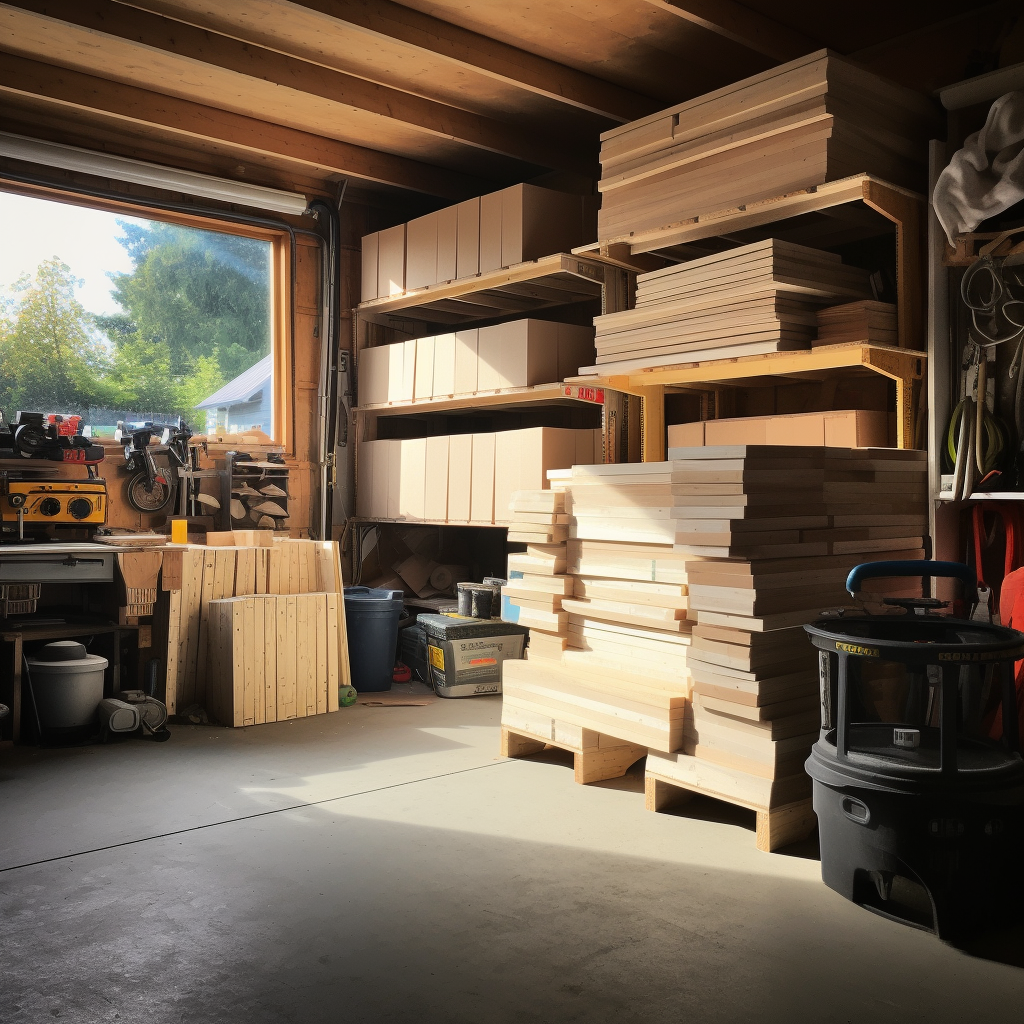Whether it’s for a DIY project or professional work, knowing how to store plywood properly ensures its longevity.
You’ll understand the significance of an ideal location, climate control, and correct stacking. You can prevent your plywood from damaging and warping like a pro.
So, let’s dive in and make sure your plywood stays in tip-top shape for your next project.
Key Takeaways
- Choose a location with climate control to prevent moisture damage
- Stack plywood flat on a level surface to distribute weight evenly and prevent sagging and warping
- Ensure good air circulation and ventilation to prevent moisture build-up
- Store plywood in a dry, well-ventilated area to prevent warping and damage
Understanding the Importance of Proper Plywood Storage
While you mightn’t think it’s crucial, understanding the importance of proper plywood storage can significantly affect the lifespan and quality of your wood.
You’re probably wondering how plywood lifespan is connected to storage. Well, improperly stored plywood is subject to plywood degradation, which shortens its usefulness.
Moisture, in particular, is a major nemesis. It can cause warping, rot, and mold, all of which degrade the quality and strength of your plywood.
So, if you’re planning to store plywood, do it in a dry, well-ventilated space.
Also, stack it flat to prevent warping and bowing.
Selecting the Ideal Location for Plywood Storage
You’ve understood the importance of proper plywood storage, and now it’s time to select the ideal location for it. Here’s a simple guide to help you:
- Space efficiency: Choose a location that allows you to maximize space without compromising access. Vertical storage can be a smart choice.
- Security measures: Your selected location should be secure to prevent theft or damage. Consider areas with lockable doors or security cameras.
- Climate control: The location should be dry and well-ventilated to avoid moisture damage.
- Ease of access: Ensure the storage area is easily accessible to avoid unnecessary handling of the plywood, reducing potential damage.
The Role of Climate Control in Plywood Storage
In your quest for optimal plywood storage, it’s crucial to consider not just the space or security, but also the role of climate control, as it can significantly influence the longevity and quality of the plywood. Humidity management and handling temperature variations are key aspects of climate control.
Consider this table:
| Climate Control Factor | Relevance in Plywood Storage |
|---|---|
| Humidity Management | High humidity can cause plywood to warp or rot. Implement a dehumidifier or proper ventilation. |
| Temperature Variations | Extreme temperatures can also damage plywood. Maintain a stable, moderate temperature. |
| Air Circulation | Good air circulation prevents moisture build-up. Ensure adequate ventilation. |
| Pest Control | Pests can destroy plywood. Regularly check for infestations. |
| Regular Monitoring | Regularly check the storage conditions to promptly address any issues. |
Don’t take climate control lightly; it’s a major factor ensuring your plywood retains its quality over time.
Essential Tips on Correctly Stacking Plywood
Now that we’ve covered climate control, let’s focus on another vital aspect of plywood storage – correctly stacking the plywood to prevent warping and damage. Plywood Stacking Techniques and Safety Precautions are crucial, so here’s a four-step guide:
- Flat Stacking: Always lay plywood flat to distribute weight evenly. This prevents sagging and warping.
- Strategic Positioning: Stack plywood on a level surface, away from direct sunlight or moisture.
- Safety Precautions: Wear gloves and use appropriate lifting techniques to prevent injury.
- Spacing: Leave small gaps between stacks for ventilation.
Preventing Damage and Warping During Plywood Storage
To prevent damage and warping during plywood storage, it’s crucial that you adhere to these guidelines and take the necessary precautions.
Plywood Moisture Prevention should be your top priority. Storing plywood in a dry, well-ventilated area will ensure that it doesn’t absorb moisture, which can cause it to warp.
Use Warping Mitigation Techniques like storing plywood flat with weight evenly distributed across it. Avoid leaning the plywood against walls; it can cause bowing or twisting. Cover the plywood with a tarp if it’s stored outdoors, but ensure air can circulate to prevent moisture buildup.
If you’re storing plywood for long periods, consider using dehumidifiers or heaters to maintain a dry environment.
Remember, your plywood’s life depends on your care.


Leave a Reply